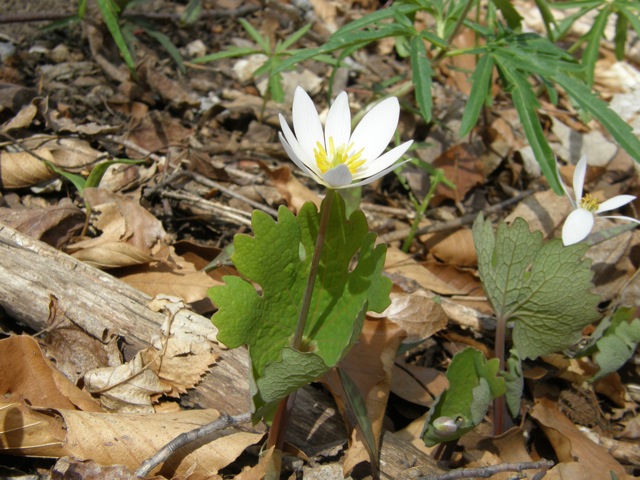Papaveraceae, the poppy family.
Description:
Plant:
Solitary white flowers on slender stems rise beside a lobed leaf.
Flowers:
White, with 8-10 petals and yellow-orange center of many stamens, to 1.5". Two sepals that
fall off as flower opens, and are thus usually not apparent.
Leaves:
Single basal leaf, round, palmately lobed or scalloped, rising beside, and sometimes wrapping around flower stem, 4"-6".
Fruit:
Two-part capsule.
Blooming:
April-May
Habitat:
Deciduous woods.
Comments:
A delicate, early spring flower, often found in extended colonies.
The name comes from the acrid red-orange sap in the roots (actually rhizomes) and stems.
This juice has been used as a temporary dye, though it fades quickly once dry.
The plant produces a toxic agent, sanguinarine, that can destroy tissue if applied to the skin,
resulting in a scab and possible scarification. Applying the juice to the skin as paint is
thus not recommended.
The compound also has anti-bacterial effects, and was approved by the USFDA as an anti-plaque
agent in toothpaste; there has been some controversy over this.
Bloodroot extracts have been promoted as anti-cancer agents, especially for skin cancer, the
idea being that topical applications can destroy the cancer cells.
This use is not sanctioned by the USFDA.
Where to find it:
Widely scattered in the woods.
The plant occurs only in a few locations, and the blooms last only a few days, so it
is not easy to find.
